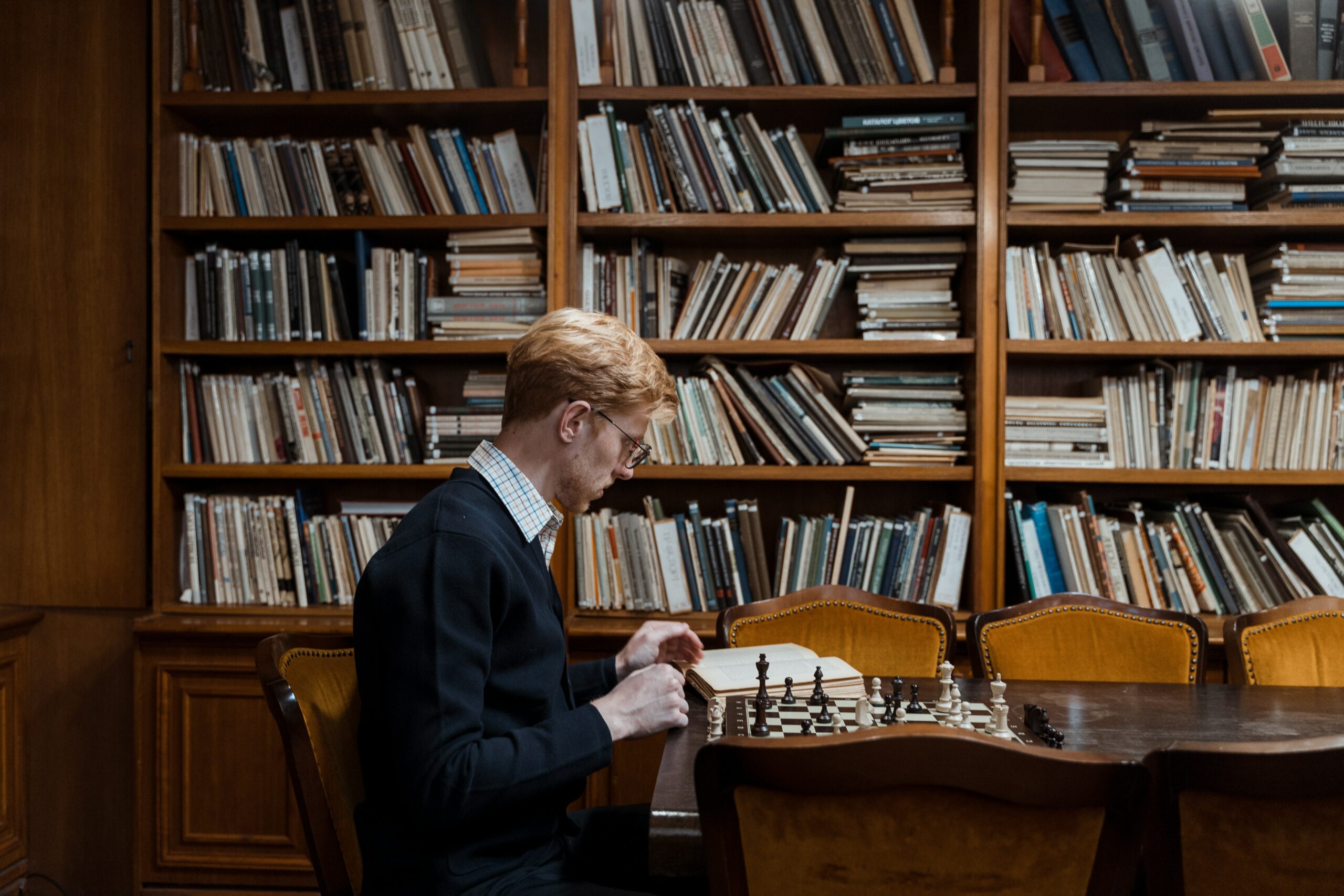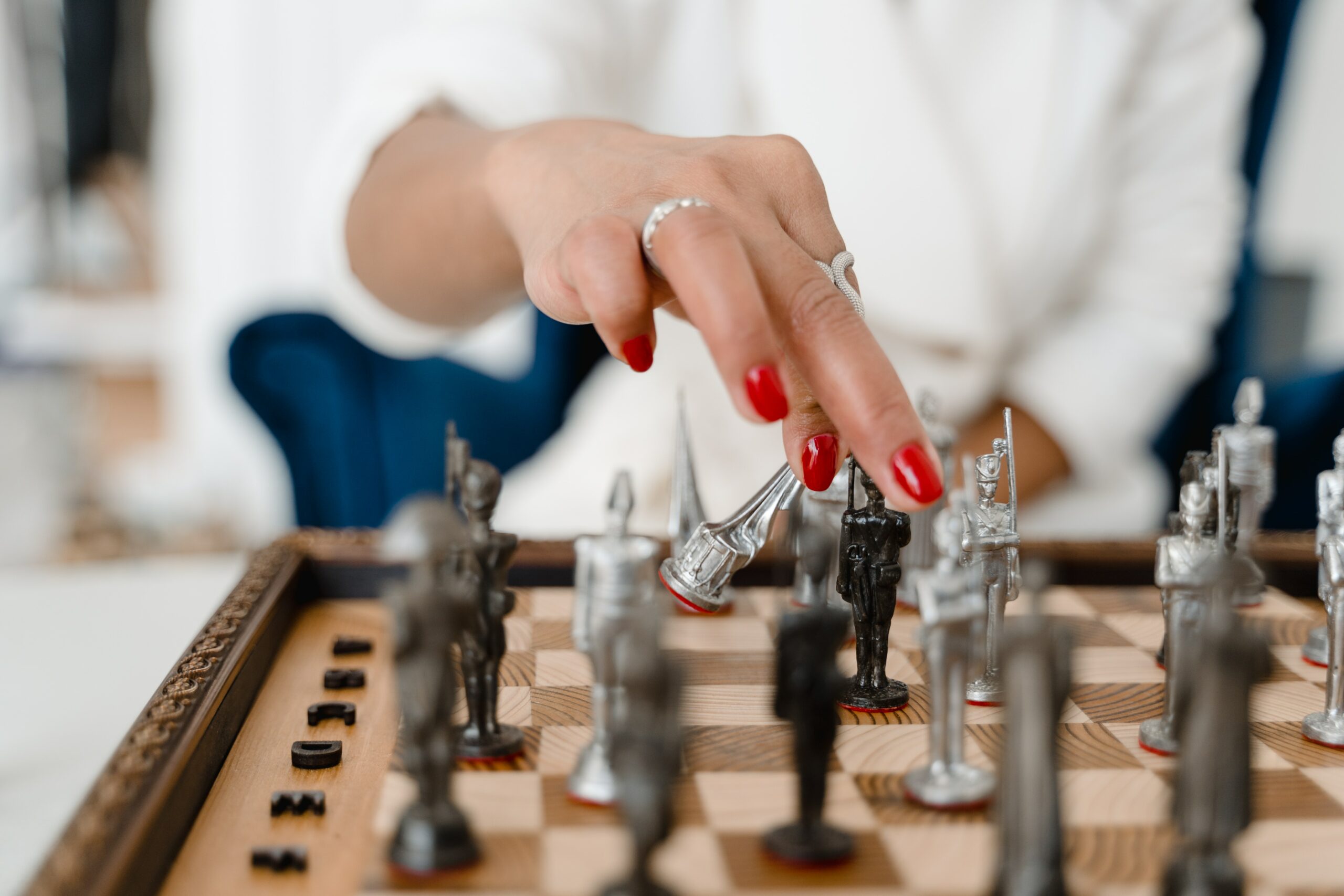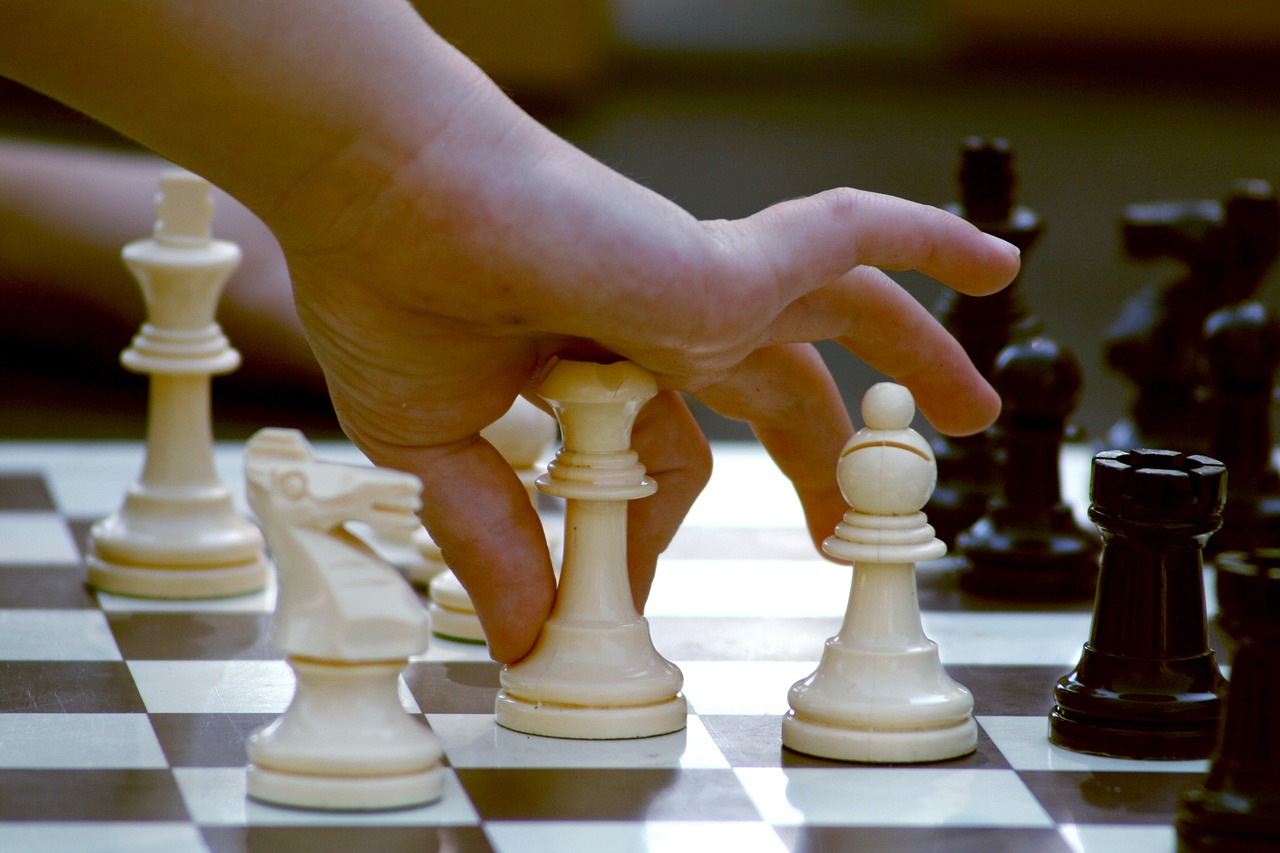Welcome to the exciting world of chess tactics! If you’re looking to enhance your strategic prowess and outwit your opponents on the chessboard, you’ve come to the right place. Chess tactics form the backbone of successful gameplay, allowing you to unleash powerful moves, exploit weaknesses, and ultimately achieve victory.
In this guide, we will delve into the best ways to improve your chess tactics, providing you with invaluable insights and strategies to elevate your game. Whether you’re a novice player looking to establish a strong foundation or an experienced chess enthusiast aiming to refine your tactical skills, this resource will equip you with the knowledge and techniques necessary to take your game to new heights.
Discover the secrets behind identifying and executing tactical maneuvers, such as forks, pins, skewers, and more. Learn how to effectively calculate variations, assess positions, and anticipate your opponent’s moves. We will explore the importance of pattern recognition, visualization, and calculation in developing a tactical mindset that sets you apart from your adversaries.
How can I elevate my chess tactics to the next level?
To take your chess tactics to the next level, it is crucial to focus on a few key aspects. Firstly, develop a strong foundation of tactical knowledge by studying and understanding various tactical motifs such as forks, pins, skewers, and sacrifices. By familiarizing yourself with these patterns, you’ll be better equipped to identify tactical opportunities in your games.
Additionally, practice tactical puzzles regularly. Solve puzzles of varying difficulty levels to challenge yourself and improve your tactical vision. Online chess platforms and puzzle books are excellent resources for finding puzzles that suit your skill level.
Furthermore, analyze your own games to identify missed tactical opportunities. This self-reflection will help you recognize recurring patterns and common mistakes, enabling you to learn from your experiences and avoid making similar errors in the future. Seeking feedback from stronger players or hiring a chess coach can also provide valuable insights and guidance for improving your tactics.

What are the essential principles behind effective chess tactics?
Effective chess tactics are based on several fundamental principles. Firstly, centralization is key. Placing your pieces in the center of the board allows for greater mobility and control over important squares, creating tactical opportunities.
Secondly, coordination is crucial. Develop a harmonious relationship between your pieces, ensuring they work together to support tactical ideas. Pieces that are poorly coordinated can be vulnerable to tactical blows from your opponent.
Moreover, initiative and tempo play a significant role in tactical play. Seizing the initiative and maintaining control over the pace of the game can force your opponent into defensive positions and create tactical possibilities for you to exploit.
Lastly, calculation and visualization are essential skills. Being able to accurately calculate potential variations and visualize the resulting positions is critical for successfully executing tactical combinations.
Which tactical training methods yield the best results?
Different training methods can yield excellent results when it comes to improving tactical skills. Solving chess puzzles is a highly effective method as it provides practical scenarios to test and develop your tactical vision. Puzzles challenge you to spot tactics and calculate variations, strengthening your ability to identify opportunities during real games.
Another beneficial training method is studying annotated games. Analyzing games played by strong players, especially grandmasters, helps you understand the thinking processes behind tactical decisions. By observing how they identify and exploit tactical opportunities, you can gain insights into effective strategies and improve your own decision-making.
Engaging in tactical exercises with a training partner or chess coach can also be valuable. These exercises can involve setting up specific tactical scenarios and practicing different tactical motifs, allowing for targeted improvement in specific areas of your game.
How can I improve my tactical vision and pattern recognition?
Improving tactical vision and pattern recognition requires consistent practice and exposure to various tactical situations. One effective method is to regularly solve chess puzzles of varying difficulty levels. Start with simpler puzzles to build your foundational skills and gradually progress to more complex ones. By repeatedly exposing yourself to different tactical motifs, you will enhance your ability to recognize similar patterns during actual games.
Playing through annotated games or studying tactical books can also enhance your tactical vision. Pay attention to how grandmasters and strong players identify tactical opportunities and execute combinations. This exposure will help train your mind to spot similar patterns in your own games.
Additionally, playing blitz or rapid chess can be beneficial for improving tactical vision. The fast-paced nature of these games forces you to make quick decisions and rely on your instincts, often leading to tactical opportunities. Regularly engaging in such time-restricted games will sharpen your tactical awareness and improve your ability to spot tactical shots.

Are there specific chess puzzles or exercises that boost tactical skills?
There are various chess puzzles and exercises designed specifically to enhance tactical skills. For beginners, elementary puzzles that focus on simple tactical motifs like forks and pins can be highly beneficial. These puzzles help build a solid foundation of tactical awareness and pattern recognition.
As you progress, more advanced puzzles can be tackled, incorporating complex combinations and strategic ideas. Look for puzzle collections or online platforms that provide puzzles categorized by difficulty level, ensuring a gradual increase in challenge as you improve.
In addition to puzzles, tactical exercises involving specific positions or themes can also be valuable. These exercises require you to find the best move or plan based on the given position, allowing you to focus on particular tactical concepts or strategic ideas.
What role does analyze grandmaster games play in improving tactics?
Analyzing grandmaster games plays a significant role in improving tactics. By studying games played by top-level players, you gain exposure to high-quality chess and witness the application of tactical ideas in real-life scenarios.
Through the analysis of grandmaster games, you can observe how top players identify and exploit tactical opportunities. This exposure helps you understand the thinking processes behind their moves, enabling you to learn from their strategies and apply them to your own games.
Furthermore, analyzing grandmaster games helps you recognize common tactical patterns and motifs. It exposes you to a wide range of tactical ideas, allowing you to expand your tactical repertoire and improve your pattern recognition skills. By reviewing and understanding these games, you develop a deeper understanding of tactical principles and their practical application.
How can I effectively combine tactical and positional play?
Effectively combining tactical and positional play is a hallmark of strong chess players. To achieve this balance, it’s essential to develop a solid understanding of both aspects of the game. Positional play involves strategic planning, pawn structures, and piece placement to gain long-term advantages. Tactical play, on the other hand, focuses on short-term opportunities to create immediate threats or tactical combinations.
One approach to integrating these elements is to use positional understanding to guide your tactical decisions. Consider the position’s overall features and imbalances before launching into a tactical sequence. Identify weaknesses in your opponent’s position that can be exploited with tactics. Conversely, use tactical opportunities to enhance your positional advantages, such as opening up lines for your pieces or gaining better control of the center.
Maintaining a balance between tactical aggression and positional patience is crucial. Sometimes, choosing a solid positional move over a tempting but risky tactical shot can lead to a more favorable outcome. Learning from strong players’ games and understanding how they seamlessly blend tactics and positions can be immensely beneficial in honing this crucial skill.
| Tactical Training Methods | Benefits | Recommended Resources |
|---|---|---|
| Solving chess puzzles | Improves pattern recognition and calculation skills | Chess.com Tactics Trainer, Chess Tempo, books like “1001 Chess Exercises for Beginners” |
| Studying tactical motifs | Enhances knowledge of common tactical patterns and themes | Books like “Winning Chess Tactics” by Yasser Seirawan, online articles, and tutorials |
| Reviewing annotated Grandmaster games | Provides real-life examples of tactical ideas and strategies | Books like “My Great Predecessors” series by Garry Kasparov, chess databases (ChessBase) |
| Playing tactical training games | Applies tactics in a practical game setting | Online chess platforms (Chess.com, lichess.org) with puzzle modes, chess training software (ChessBase) |
| Analyzing personal games | Identifies tactical mistakes and areas for improvement | Chess analysis software (ChessBase, Stockfish), chess coach or mentor |
Which resources can help me deepen my understanding of chess tactics?
Deepening your understanding of chess tactics requires a combination of studying various resources. Chess books and online courses dedicated to tactics can be highly valuable, as they present tactical concepts, patterns, and practical examples in a structured manner. Look for books that cover a wide range of tactical motifs and provide exercises to reinforce your learning.
Tactical puzzle books are also excellent resources. Solving puzzles regularly not only sharpens your tactical vision but also exposes you to a diverse array of tactical patterns that frequently arise in games.
Online chess platforms offer access to vast databases of games, including those with strong tactical themes. Analyzing games played by grandmasters and tactical specialists help you grasp how these players handle different tactical situations.
Moreover, chess tactics videos, webinars, and lectures provide visual and interactive learning experiences. Many online platforms have tactical trainers and simulators, allowing you to practice and receive instant feedback on your tactical skills.
Is it beneficial to study specific tactical themes or motifs?
Studying specific tactical themes or motifs can significantly enhance your tactical abilities. By focusing on individual tactical elements, such as discovered attacks, double attacks, or deflections, you develop a deeper understanding of their underlying concepts and patterns.
Start by choosing a particular theme and immersing yourself in various puzzles and game examples related to that theme. This targeted approach allows you to recognize tactical opportunities in your games that align with the specific motif you’ve been studying.
As you become proficient in one theme, move on to others to expand your tactical repertoire. Gradually, you’ll notice how different tactical themes intersect and influence each other, leading to more sophisticated combinations in your games.
How can I apply my tactical knowledge in practical games?
Applying tactical knowledge in practical games requires a combination of preparation and alertness during play. Firstly, be well-versed in tactical concepts and patterns through consistent practice and study. As mentioned earlier, solving puzzles and reviewing annotated games can significantly enhance your tactical acumen.
During games, stay vigilant for tactical opportunities that may arise. Look for potential weaknesses in your opponent’s position, such as loose pieces or vulnerable squares. Be on the lookout for tactical shots, even in seemingly quiet positions.
Moreover, timing is essential in executing tactical combinations. Avoid forcing tactics if the position doesn’t warrant them; instead, focus on improving your overall position. Patience is key, and choosing the right moment to unleash a tactical blow can lead to a decisive advantage.

Are there any common mistakes to avoid when developing chess tactics?
When developing chess tactics, it’s important to be aware of common mistakes that can hinder your progress. One common pitfall is relying too heavily on memorizing specific tactical sequences without understanding the underlying principles. Instead, focus on grasping the concepts and patterns behind tactical motifs, which will enable you to apply them in a variety of positions.
Another mistake is neglecting to consider your opponent’s tactical resources. Always be alert to potential counterattacks or defensive resources that your opponent may have. A tactical opportunity that seems promising at first glance may backfire if your opponent has a strong defensive move or counter-tactic.
Overlooking positional considerations is another error to avoid. While tactical opportunities can be enticing, it’s essential to maintain a solid position and prioritize long-term advantages. Rushing into tactical combinations without considering the positional consequences can leave you in a strategically compromised position.
Conclusion
Congratulations on reaching the end of this guide on improving your chess tactics! By now, you have gained valuable insights and tools to enhance your strategic abilities and elevate your game to new levels. Remember that improving your chess tactics is an ongoing journey that requires dedication, practice, and a hunger for continuous learning.
Now, armed with your newfound knowledge and a burning desire to improve, venture forth into the chess world and apply your enhanced tactical skills. Embrace the challenges, relish the victories, and learn from the defeats. With patience, persistence, and a hunger for improvement, you are well on your way to becoming a skilled chess tactician.




